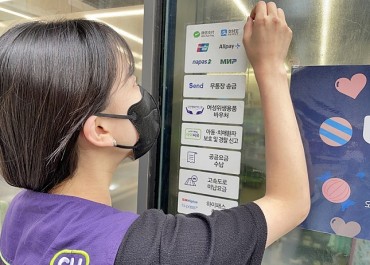SEOUL, Nov. 9 (Korea Bizwire) — Being a homeowner has become more difficult for Hwang Jin-kyu, a 38-year-old software engineer who has been trying to buy a three-bedroom apartment in northern Seoul for months.
He sought to borrow about 200 million won (US$178,300) from a bank to buy the 79.3-square-meter home, but his application for a mortgage loan was rejected after the government recently required banks to mandatorily adopt tighter lending rules.
“I want to buy the apartment, but I can’t. Living in Seoul is becoming more difficult for ordinary first-time home buyers like me,” Hwang complained.
Hwang’s frustration appears to reflect the government’s “success” in taming home prices in Seoul.
Driven by years of ultra-low interest rates and the previous government’s policy of reviving the economy throughout the property sector, home prices in Seoul and some parts of South Korea moved up almost nonstop till September this year.
The average flat price in Seoul soared to 780 million won in August this year from 490 million won four years ago. Seoul’s home prices in August were 21 percent higher than a year earlier, despite rounds of measures to cool the housing market and rein in mounting household debt.
With the property market in Seoul showing signs of overheating, the government announced new property measures in the fall that included heavier taxes on home ownership and fresh mortgage restrictions on rental home owners.
Announcing the measures, Financial Services Commission Chairman Choi Jong-ku said that “houses are for living in,” asking financial institutions to not serve as supporters of speculative activities in the property market.
Starting last week, the government now requires banks to enforce a tougher mortgage rule, called the debt-to-service (DSR) system.
The DSR system measures how much a borrower has to pay in principal and interest payments in proportion to his or her yearly income. It is one of the barometers checked for risky household loans.
Such measures have been effective so far. There were 771 apartment transactions in October, down 86 percent from a month earlier, according to data by the land ministry.
Home prices in Seoul rose 1.43 percent in October, compared with a 2.85 percent gain a month earlier, according to Kookmin Bank.
In the first nine months of this year, there were about 212,000 pre-sales of new apartment units, compared with 218,000 units for the first nine months of last year and 321,000 units for the same period in 2016.
In September, household lending by banks grew at a slower pace than the previous month, the Bank of Korea (BOK) said.
Outstanding household loans from banks came to 807.7 trillion won ($707.9 billion) as of the end of September, up 5.1 trillion won from August. The on-month gain was lower than the 5.9 trillion won tallied in August.
According to the Financial Supervisory Service, the issuance of asset-backed securities fell 13.5 percent in the third quarter to 10.9 trillion won, hit by a decline in sales of government-led mortgage funds.
Another factor behind the recent stabilization in home prices in Seoul is concern about a rate hike by the BOK.
BOK Gov. Lee Ju-yeol told lawmakers last month that, “It is necessary to adjust the (current) accommodative monetary policy in a way that eases the financial imbalances and to have policy room to deal with future economic cycles if external downside risks do not weigh heavily on economic growth and inflation.”
He added, “Currently, the BOK is maintaining the accommodative monetary policy as external risks heighten uncertainties in the economy and inflation pressure is low.”
Some market watchers expect the BOK to raise its benchmark interest rate as early as Nov. 30, when it holds its next monetary policy meeting.
Park Won-gap, a senior property analyst at Kookmin Bank, said signals of a rate hike could discourage people from making big investments like home purchases.
“Potential home buyers are in a wait-and-see mode, pressured by tougher tax and lending rules as well as the possibility of a rate hike,” Park said.
It is still too early to say whether the property market may undergo a correction, although some analysts expect home prices to fall next year.
According to a report by the Construction & Economy Research Institute of Korea, home prices in South Korea could decline 1.1 percent in 2019.
“Given global monetary policies, asset markets and macroeconomic conditions, there is a high possibility that upward momentum in the property market may not persist next year,” Heo Yoon-kyeong, a researcher at the institute, said in the report, which was released on Wednesday.
Housing prices in London, Sydney and New York have also been falling since August as borrowing costs have risen, Heo pointed out.
South Korea’s construction industry, which accounts for about 9 percent of the gross domestic product, is expected to see a 6.2 percent decline in local orders next year, according to the report.
The report also forecast that prices of “jeonse” home rentals would fall 1.5 percent next year. Jeonse is a home rental arrangement unique to South Korea, where tenants pay a deposit instead of paying monthly fees and landlords return the deposit when the lease expires.
It was the first time since 2010 that the institute predicted both home and jeonse prices to fall on an annual basis.
(Yonhap)









